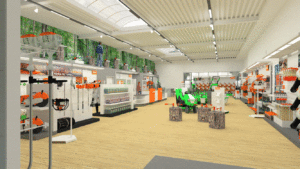From the very first websites in the early 1990s, designers have been experimenting with the way sites look Web. The first sites were completely text-based, with images minimal and no real design to speak of other titles and paragraphs. Nevertheless, the industry moved on and eventually brought us table based designs, then Flash and finally CSS based layouts.
The first web pages
In August 1991, Tim Berners-Lee published the first website, a simple text-based page with a few links. A 1992 copy of the original page still exists online. It had a dozen links, and it just served to tell people what the World Wide Web was all about.
Table layouts
Table-based layouts gave designers web more options to create websites. The original table in HTML was intended to display tabular data, but the designers realized quickly that they could use it to structure their designs and create multi-column layouts more complicated than HTML was capable of originally.
Table-based designs grew in complexity, incorporating cut background images, often giving the illusion of a simpler structure than the actual layout of the table.
Flash based web designs
Flash (originally known as FutureSplash Animator, then Macromedia Flash, and currently as Adobe Flash) was developed in 1996. It started with very basic tools and a timeline, and progressed to have powerful tools to develop complete sites. flash introduced lots of options beyond what was possible with HTML.
Dynamic HTML (DHTML)
Around the same time as the introduction of Flash to the web design scene (late 90s and early 2000s), the popularization of DHTML techniques, which consisted of various web technologies such as JavaScript, and sometimes server-side scripts, to create interactive / animated.
During this time, with the onset of Flash and the popularity of DHTML, the concept of interactive web pages began that allow users to not only read static content, but also interact with web content.
CSS based design
CSS-based layouts began to gain popularity after the dotcom boom in the early 2000s. While CSS had been available long before that, there was limited support for it in the major browsers and many designers were unfamiliar (and even intimidated by him).
CSS-based layouts have many advantages over traditional CSS-based layouts.
table-based or Flash layouts. The first is that it separates the elements of content design, which ultimately meant that there would be a greater distinction between the visual aspect of a web design and its content.
CSS is also a good practice for styling a page web, where table-based layouts are not. It also reduced clutter branding and was made for cleaner and more semantic web designs. css too
facilitates the maintenance of the sites, since the content and elements of design are separate. You can change the entire look of a site based on CSS without having to touch the content.
The document sizes of the CSS layouts are generally smaller than table-based layouts, which translates in an improvement in page response times.
The future?
Where is web design headed? Who knows. The owners business now, from golf course owners to technicians of HVAC, are focusing the design of their sites on the user experience
to ensure user satisfaction and maintain your reputation.
All this leads us to think that 3D sites will be the trend in the near future, giving visitors sensory experiences through 360-degree manipulation of their content.



